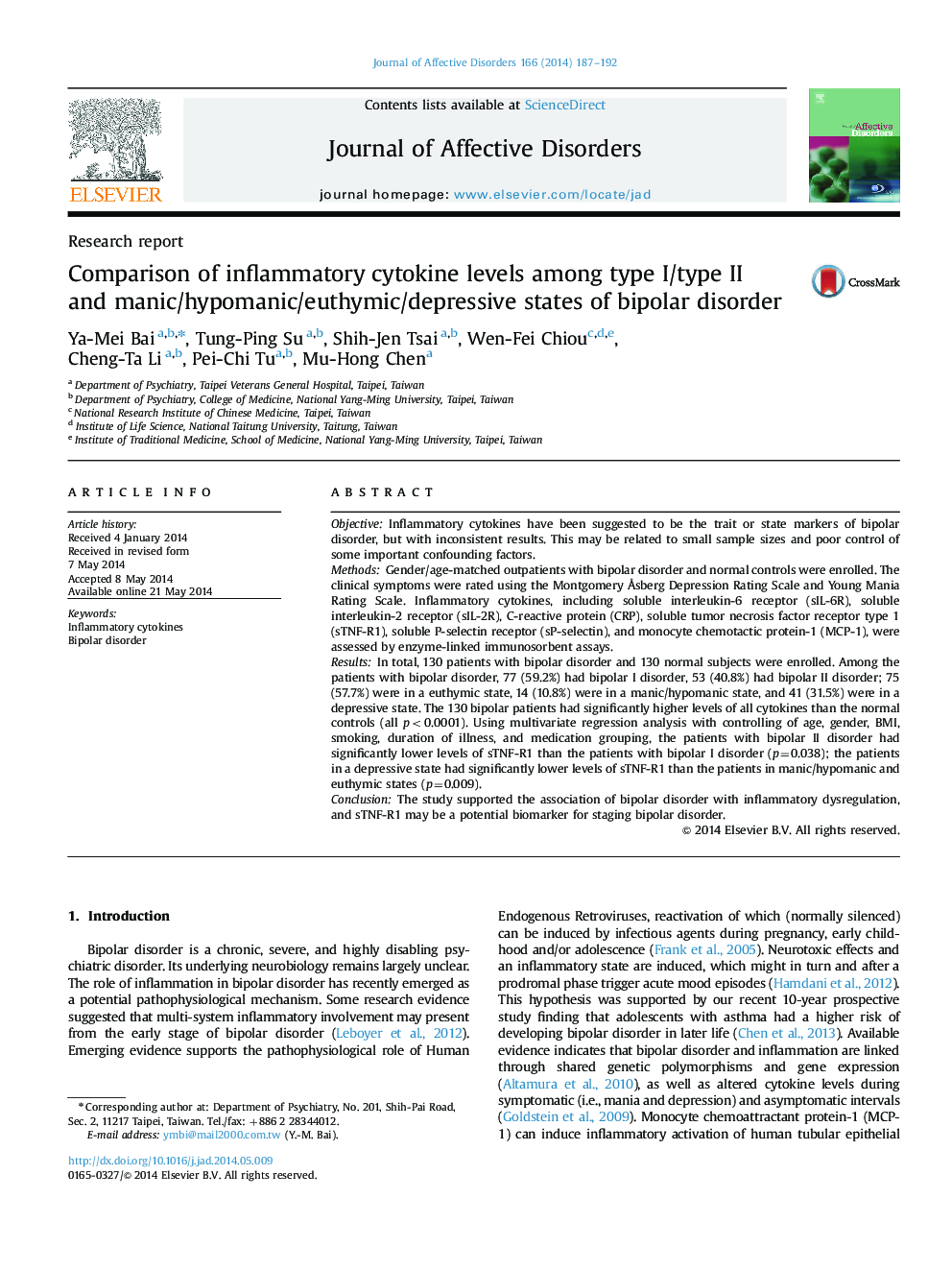| کد مقاله | کد نشریه | سال انتشار | مقاله انگلیسی | نسخه تمام متن |
|---|---|---|---|---|
| 6232524 | 1608159 | 2014 | 6 صفحه PDF | دانلود رایگان |

ObjectiveInflammatory cytokines have been suggested to be the trait or state markers of bipolar disorder, but with inconsistent results. This may be related to small sample sizes and poor control of some important confounding factors.MethodsGender/age-matched outpatients with bipolar disorder and normal controls were enrolled. The clinical symptoms were rated using the Montgomery à sberg Depression Rating Scale and Young Mania Rating Scale. Inflammatory cytokines, including soluble interleukin-6 receptor (sIL-6R), soluble interleukin-2 receptor (sIL-2R), C-reactive protein (CRP), soluble tumor necrosis factor receptor type 1 (sTNF-R1), soluble P-selectin receptor (sP-selectin), and monocyte chemotactic protein-1 (MCP-1), were assessed by enzyme-linked immunosorbent assays.ResultsIn total, 130 patients with bipolar disorder and 130 normal subjects were enrolled. Among the patients with bipolar disorder, 77 (59.2%) had bipolar I disorder, 53 (40.8%) had bipolar II disorder; 75 (57.7%) were in a euthymic state, 14 (10.8%) were in a manic/hypomanic state, and 41 (31.5%) were in a depressive state. The 130 bipolar patients had significantly higher levels of all cytokines than the normal controls (all p<0.0001). Using multivariate regression analysis with controlling of age, gender, BMI, smoking, duration of illness, and medication grouping, the patients with bipolar II disorder had significantly lower levels of sTNF-R1 than the patients with bipolar I disorder (p=0.038); the patients in a depressive state had significantly lower levels of sTNF-R1 than the patients in manic/hypomanic and euthymic states (p=0.009).ConclusionThe study supported the association of bipolar disorder with inflammatory dysregulation, and sTNF-R1 may be a potential biomarker for staging bipolar disorder.
Journal: Journal of Affective Disorders - Volume 166, September 2014, Pages 187-192